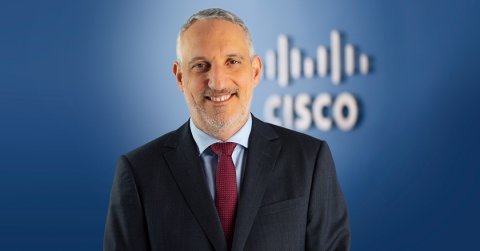
Today Cisco says it is reimagining security for data centres and clouds in the AI era with the launch of Cisco Hypershield that is bringing the power of Hyperscaler security and connectivity to the enterprise.
The company unveiled its new revolutionary approach to securing data centres and clouds in response to the increasing demands the AI revolution has put on IT infrastructure with its new security architecture industry-first, Cisco Hypershield. This unprecedented innovation embodies Cisco’s vision of a self-managing fabric that seamlessly integrates from the network to the endpoint to power and protect the AI-scale data centres and clouds – to make every application and device secure no matter how they are distributed or connected.
We talked with Fady Younes, Managing Director for Cybersecurity at Cisco in the Middle East and Africa to shed the light on the new groundbreaking security architecture from Cisco.
Can you share few highlights on today’s announcement?
Today Cisco launched one of the most exciting products we have worked on in the field of cybersecurity in the last 40 years: Hypershield. This is a brand-new security architecture that aims to protect organisations from cyber threats by identifying and securing infrastructure vulnerabilities before cyber criminals can exploit them. By utilising AI and cloud technologies, Hypershield provides a proactive protection mechanism. Exactly where customers need protection. Be it in the cloud, in the data centre, on the factory floor or in the hospital. It is a revolutionary new security architecture. It’s built with technology originally developed for hyperscale public clouds and is now available for enterprise IT teams of all sizes.
Can you explain how Hpershield works?
Security enforcement with Hypershield happens at three different layers: in software, in virtual machines, and in network and compute servers and appliances, leveraging the same powerful hardware accelerators that are used extensively in high-performance computing and hyperscale public clouds.
It was built on three key pillars:
- AI-Native: Built and designed from the start to be autonomous and predictive, Hypershield manages itself once it earns trust, making a hyper-distributed approach at scale possible.
- Cloud-Native: Hypershield is built on open source eBPF, the default mechanism for connecting and protecting cloud-native workloads in the hyperscale cloud. Cisco acquired the leading provider of eBPF for enterprises, Isovalent, earlier this month.
- Hyper-Distributed: Cisco is completely reimagining how traditional network security works by embedding advanced security controls into servers and the network fabric itself. Hypershield spans all clouds and leverages hardware acceleration like Data Processing Units (DPU) to analyse and respond to anomalies in application and network behaviour. It shifts security closer to the workloads that need protection.
We understand that Hypershield is designed to solve key customer challenges in defending against today’s sophisticated threat landscape – can you give more insights on that?
Cisco Hypershield uses AI to solve three key customer challenges that they have not been able to overcome with cybersecurity for many decades. Firstly, when it comes to infrastructure updates, it is very challenging to keep infrastructure up to date. Organizations constantly have outdated infrastructures because it is so tedious and costly to update them. Ideally, Hypershield eliminates that, the solution does the upgrading itself.
Secondly, attackers are skilled at weaponizing newly published vulnerabilities faster than defenders can patch. With defenders seeing nearly 100 new vulnerabilities every day, according to Cisco Talos Threat Intelligence, this can lead to catastrophic results. Hypershield delivers protection in minutes by automatically testing and deploying compensating controls into the distributed fabric of enforcement points.
The third area is segmentation. If an attacker penetrated the network, segmentation is the key to stopping their lateral movement. Hypershield enables autonomous network segmentation. To do this, the solution constantly monitors, automatically determines reasons and re-evaluates existing policies to autonomously segment the network. This is particularly helpful in large and complex environments.
Image Credit: Cisco





